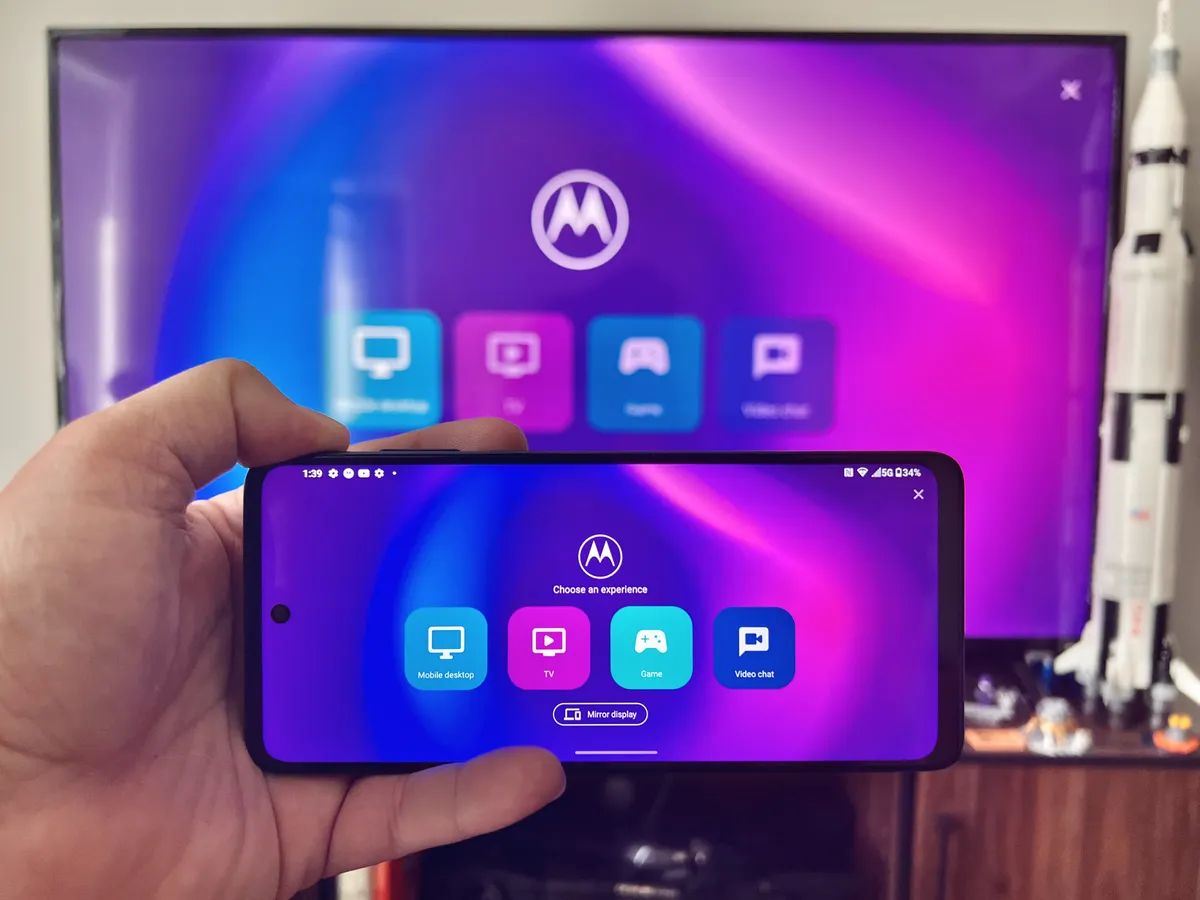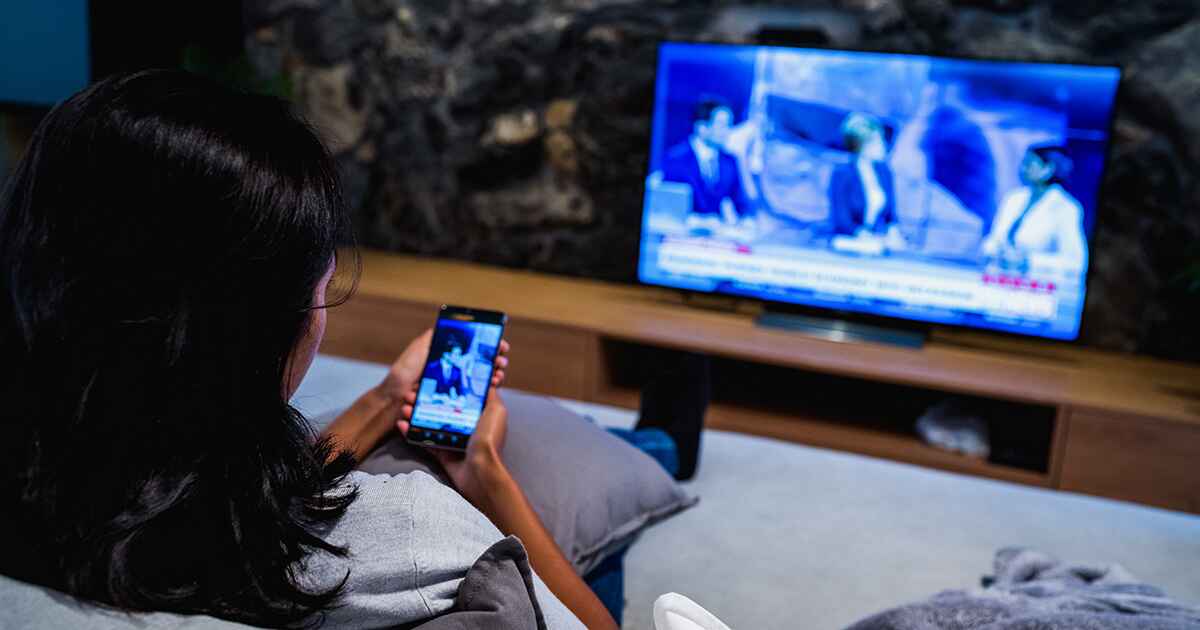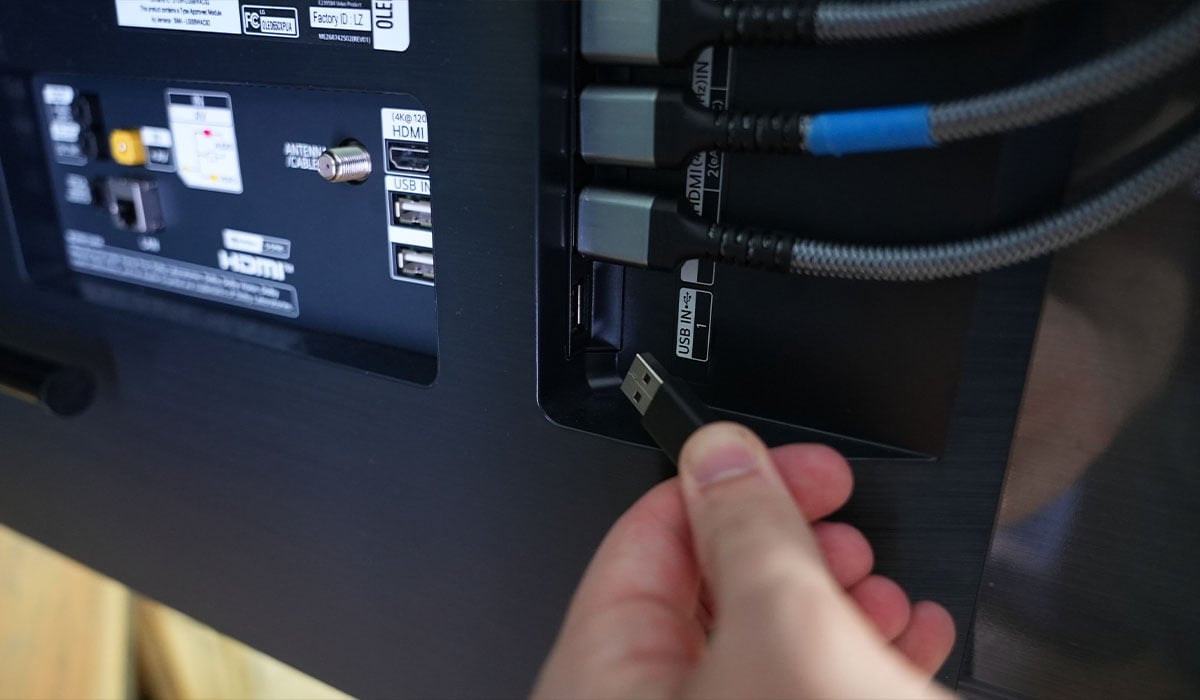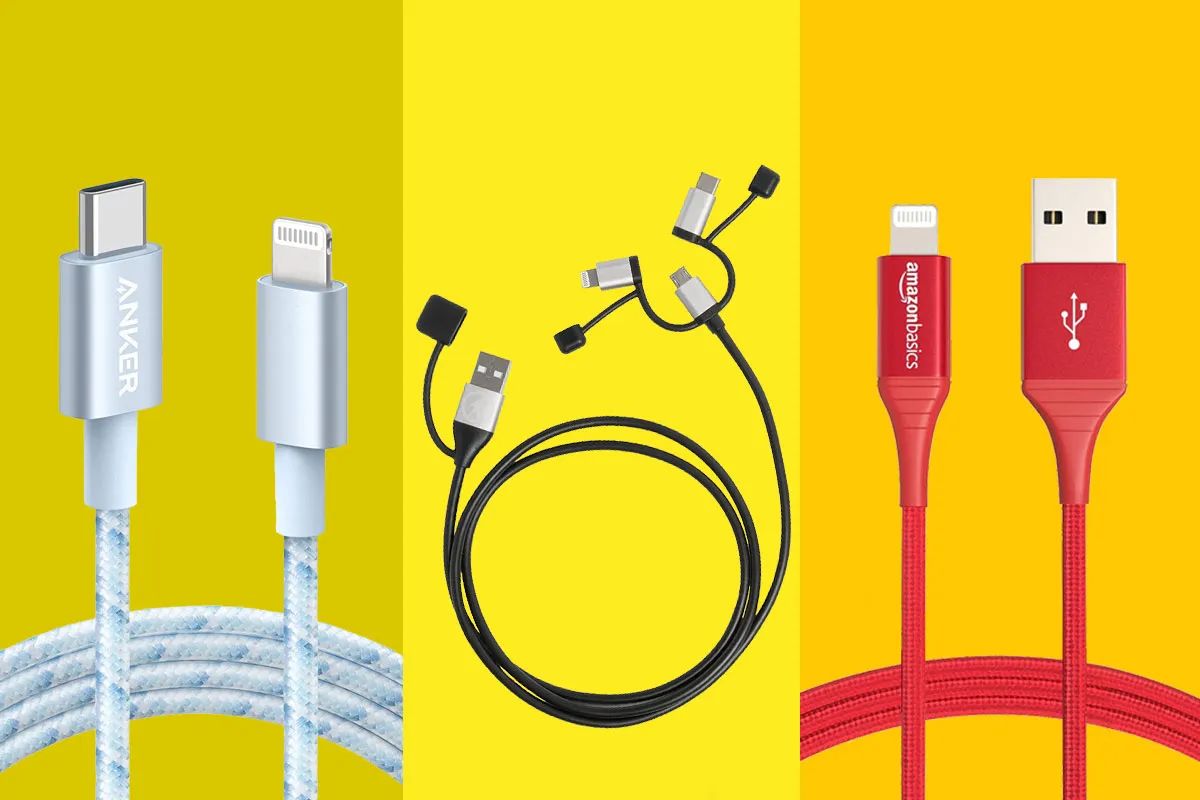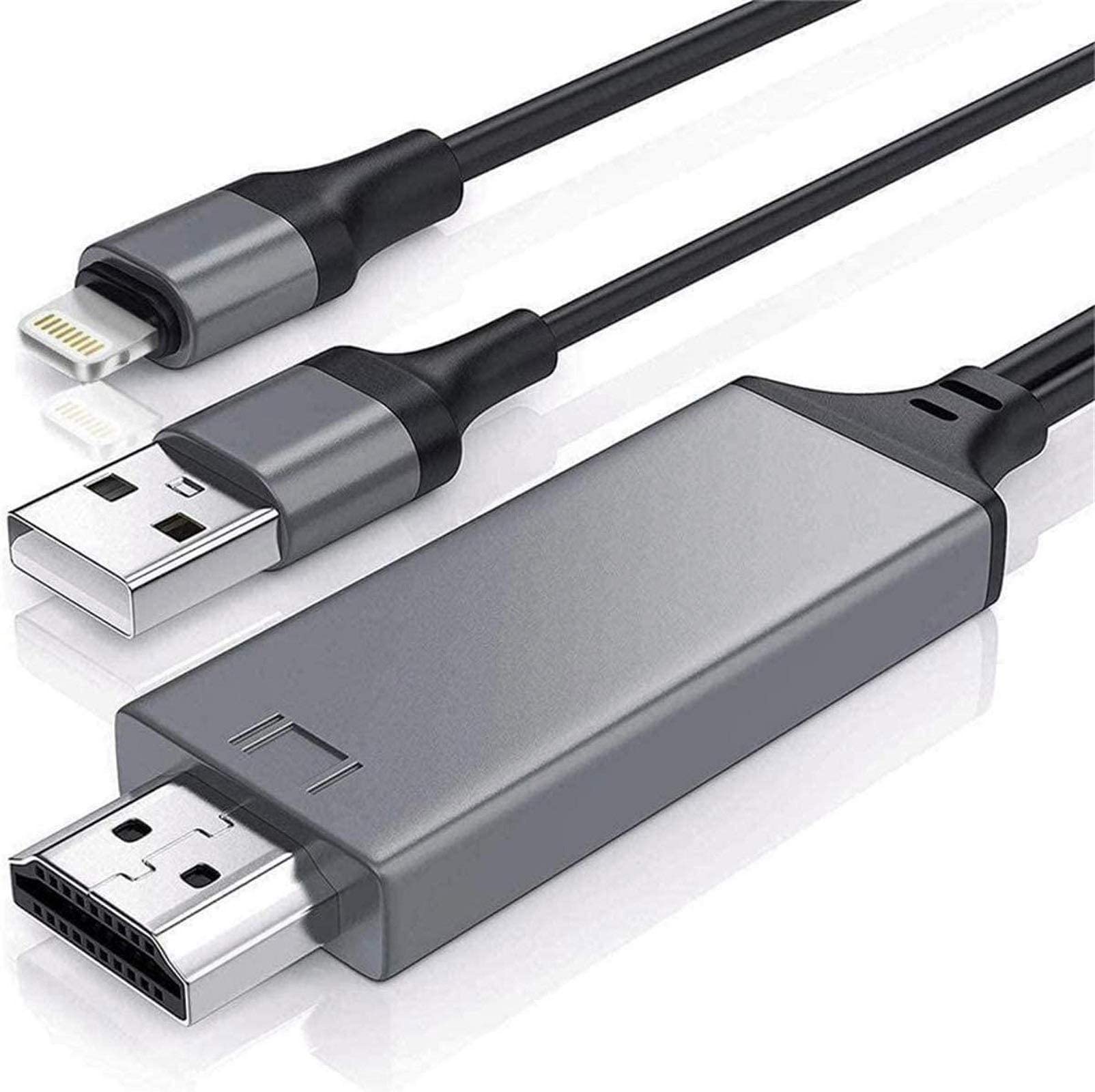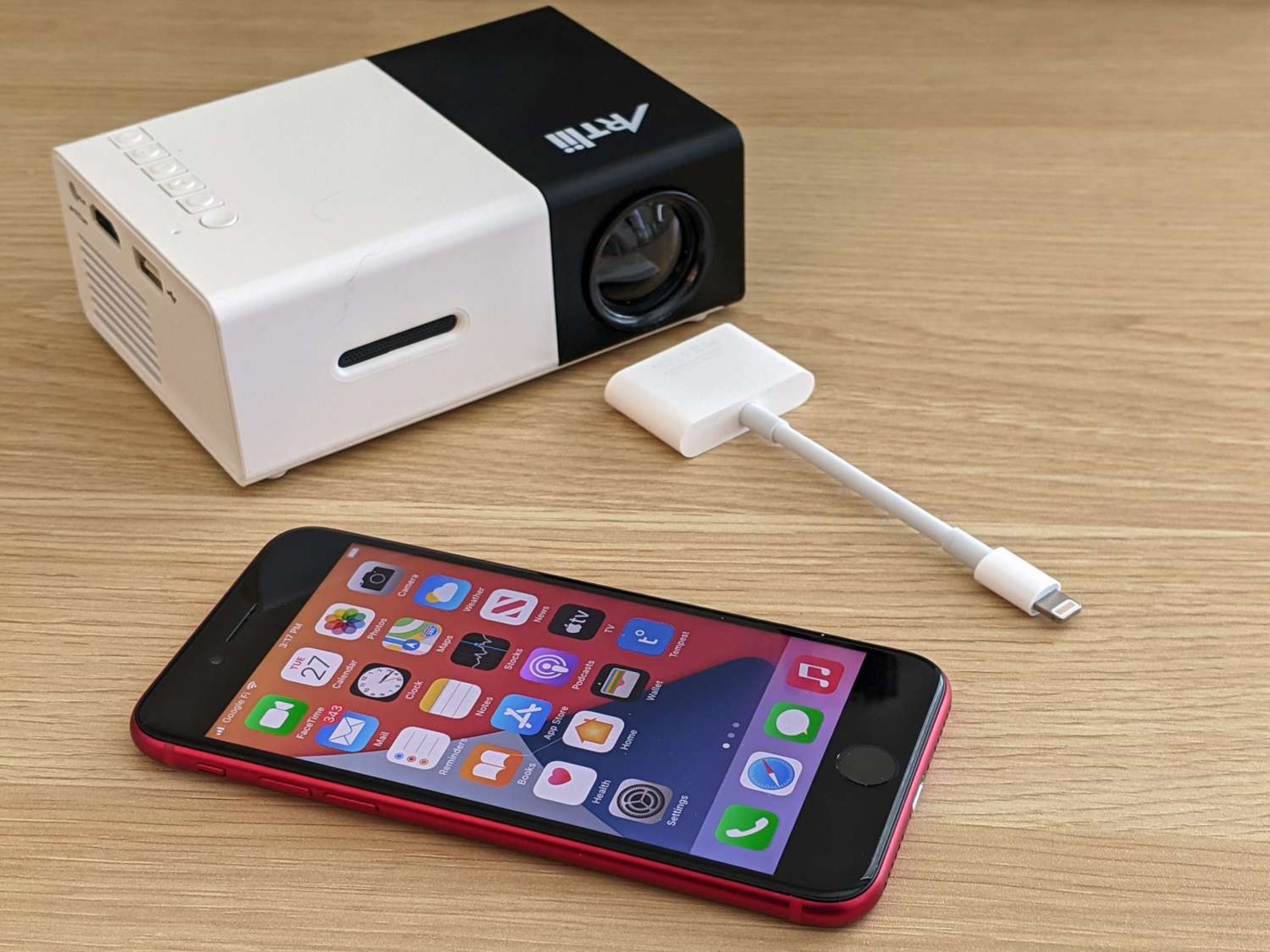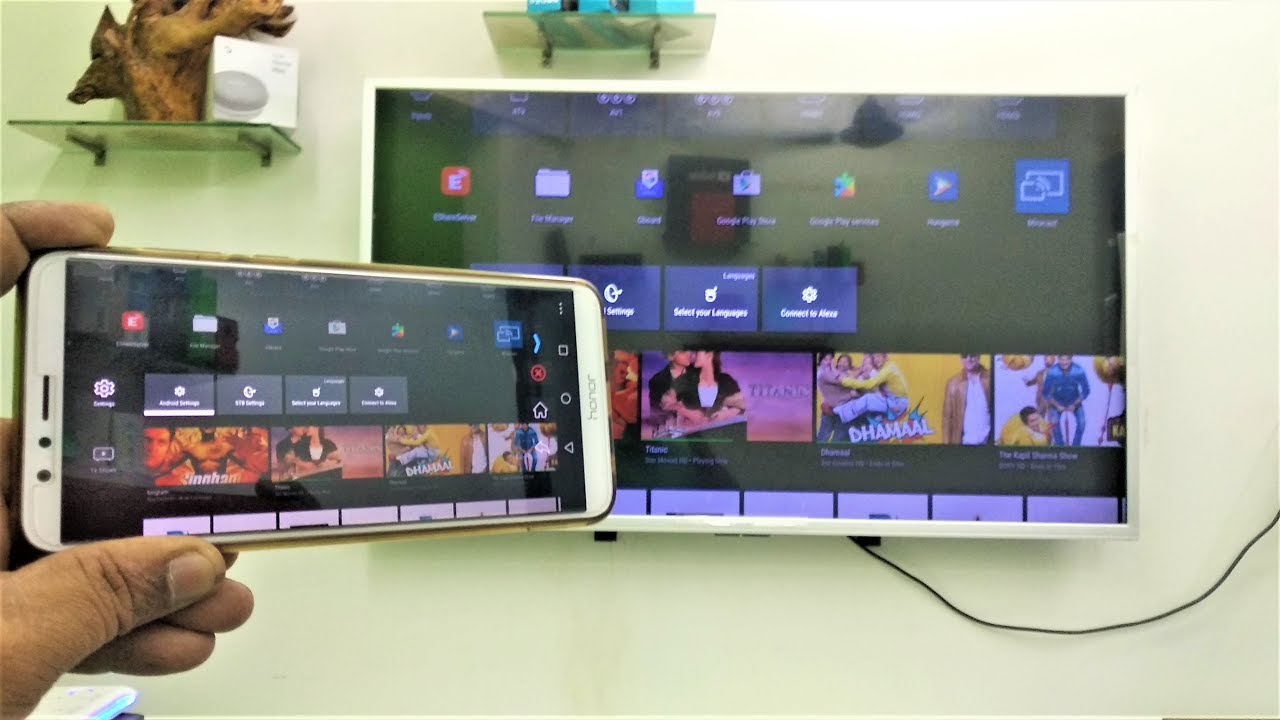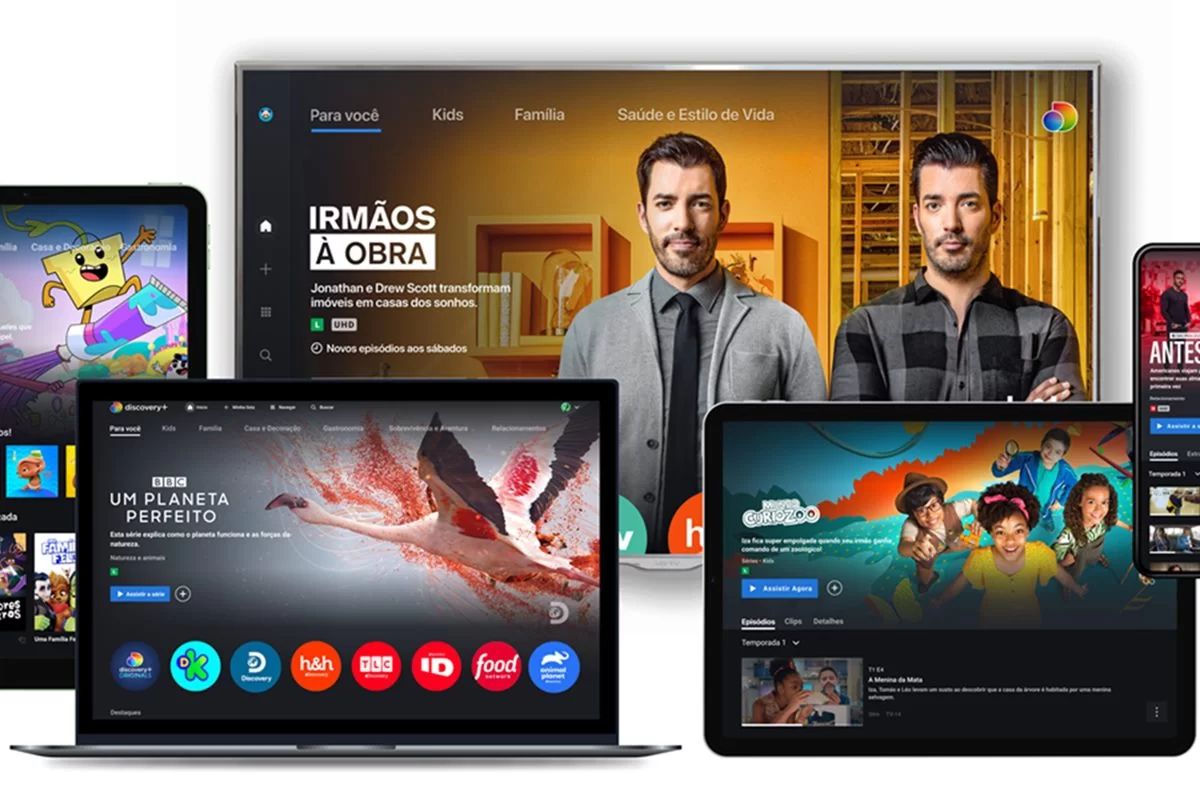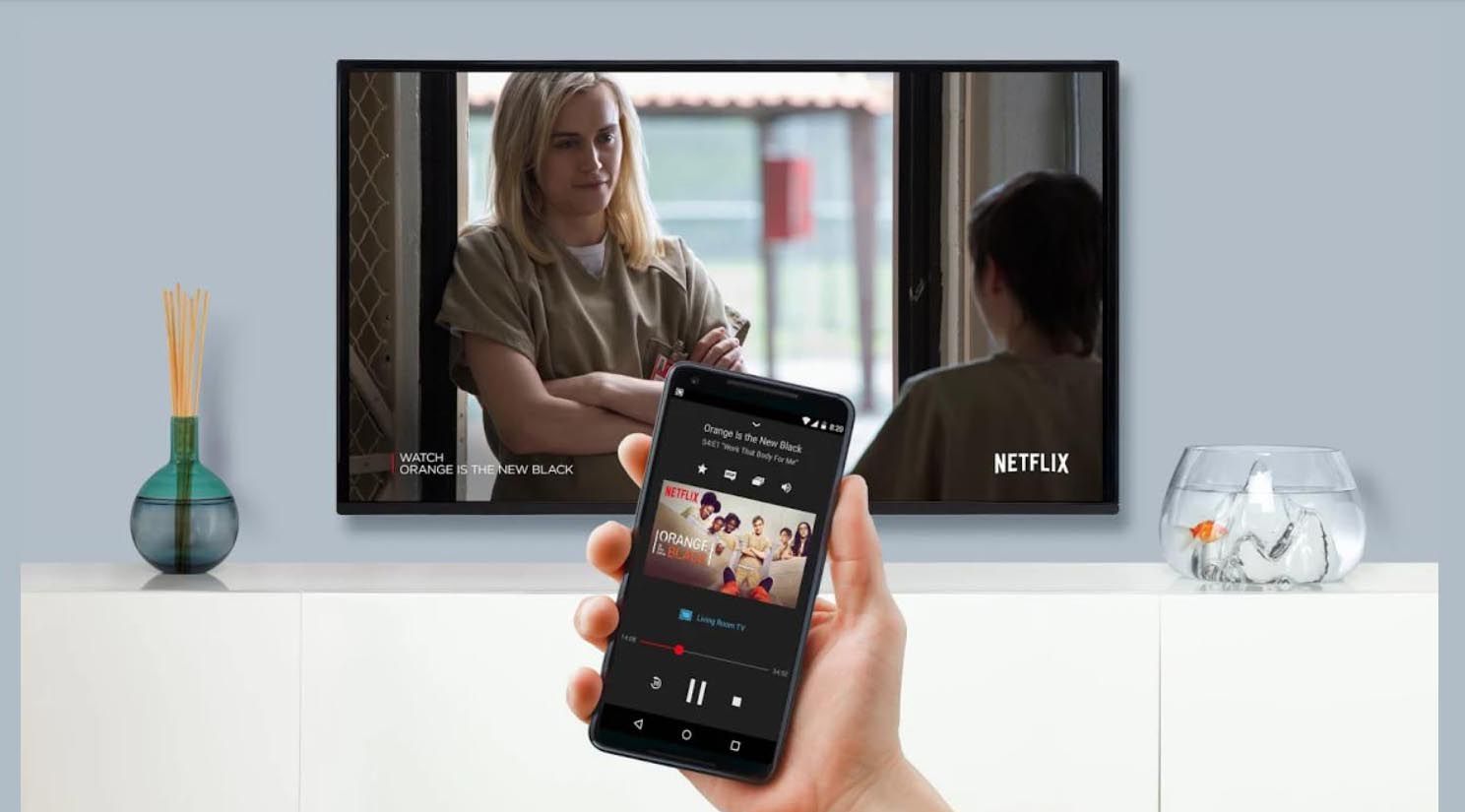Introduction
Are you tired of squinting at your smartphone screen to watch videos or view photos? Are you looking for a way to enjoy your favorite mobile apps and content on a larger screen without the hassle of HDMI cables? Look no further! In this comprehensive guide, we'll explore the world of HDMI-free connections, providing you with a wealth of options to seamlessly connect your phone to your TV.
Gone are the days of being tethered to your TV by cumbersome cables. With the advent of wireless technology, connecting your phone to your TV has never been easier. Whether you're an Android enthusiast, an Apple aficionado, or a fan of other mobile devices, there's a solution tailored to your needs. From streaming devices like Chromecast and Apple TV to wireless protocols such as Miracast and DLNA, the possibilities are endless.
Join us as we delve into the realm of wireless connectivity and discover the myriad ways you can effortlessly mirror and stream content from your smartphone to your TV. Say goodbye to limitations and embrace the freedom of wireless phone-to-TV connections. Let's embark on this journey together and unlock the full potential of your mobile device.
Wireless Connection Options
When it comes to wirelessly connecting your phone to your TV, you have a multitude of options at your disposal. From dedicated streaming devices to built-in wireless protocols, each method offers its own unique benefits and compatibility with different devices. Let’s explore some of the most popular wireless connection options available today:
- Chromecast: Google’s Chromecast is a versatile and affordable streaming device that plugs into your TV’s HDMI port. It allows you to cast content from your smartphone, tablet, or computer directly to your TV, transforming it into a smart TV. With support for various apps and screen mirroring, Chromecast offers seamless integration with both Android and iOS devices.
- Apple TV: Apple’s dedicated streaming box, Apple TV, provides a seamless way to connect your iPhone or iPad to your TV. With AirPlay functionality, you can effortlessly mirror your iOS device’s screen or stream content from compatible apps to your TV, all with the signature Apple user experience.
- Miracast: Miracast is a wireless display standard that enables screen mirroring and media streaming from compatible Android devices to Miracast-enabled TVs and displays. This peer-to-peer wireless protocol eliminates the need for a Wi-Fi network, making it a convenient option for direct screen sharing.
- MHL (Mobile High-Definition Link): MHL is a wired solution that allows you to connect supported mobile devices to MHL-enabled TVs and monitors via a micro USB or USB-C to HDMI cable. This technology delivers high-definition audio and video, effectively turning your TV into a large external display for your smartphone.
- DLNA (Digital Living Network Alliance): DLNA enables the seamless sharing of media between DLNA-certified devices, including smartphones, tablets, smart TVs, and gaming consoles, over a home network. By leveraging DLNA, you can effortlessly stream photos, videos, and music from your phone to your TV without the need for additional hardware.
With these diverse wireless connection options, you can choose the method that best suits your specific devices and preferences. Whether you’re an Android user, an Apple enthusiast, or a fan of cross-platform compatibility, there’s a wireless solution tailored to your needs. Let’s dive deeper into each option to uncover the seamless ways you can bridge the gap between your phone and TV.
Using Chromecast
If you’re seeking a versatile and user-friendly way to connect your phone to your TV, Google’s Chromecast is a standout option. This compact streaming device offers seamless integration with both Android and iOS devices, allowing you to effortlessly cast a wide range of content to your TV.
Setting up Chromecast is a breeze. Simply plug the Chromecast device into your TV’s HDMI port and power it through the USB port or a power outlet. Once connected, download the Google Home app on your smartphone to complete the setup process. With the app, you can link your Chromecast to your Wi-Fi network and customize its settings to suit your preferences.
With Chromecast, you can cast a plethora of content from your phone to your TV. Whether you want to stream videos from popular apps like YouTube, Netflix, or Disney+, or mirror your device’s screen to showcase photos and presentations, Chromecast delivers a seamless experience. Additionally, many apps feature a Cast button, allowing you to initiate the casting process with a simple tap.
One of the standout features of Chromecast is its support for multi-room audio. By grouping Chromecast-enabled speakers and devices together in the Google Home app, you can create a synchronized audio experience throughout your home. This functionality extends to compatible music and podcast apps, offering a cohesive and immersive listening experience.
Furthermore, Chromecast offers the ability to mirror your Android device’s screen to your TV, providing a convenient way to share your screen during video calls, demonstrate mobile games on a larger display, or navigate your phone’s interface with ease. This screen mirroring capability adds a layer of versatility to Chromecast, making it a valuable tool for both entertainment and productivity.
Whether you’re hosting a movie night, sharing vacation photos with friends and family, or delivering a captivating presentation, Chromecast empowers you to elevate your content from your phone to the big screen. With its intuitive setup, broad app compatibility, and seamless casting capabilities, Chromecast is a compelling choice for wireless phone-to-TV connectivity.
Using Apple TV
For Apple enthusiasts seeking a seamless and integrated way to connect their iPhone or iPad to their TV, Apple TV stands out as an exceptional solution. With its AirPlay functionality and access to a myriad of apps and services, Apple TV offers a comprehensive ecosystem for wirelessly streaming content from your iOS device to your TV.
Setting up Apple TV is straightforward. Simply connect the device to your TV via HDMI and power it up. Once powered on, you can configure Apple TV using your iOS device, enabling a streamlined setup process that leverages your existing Apple ID and preferences.
With AirPlay, you can effortlessly mirror your iPhone or iPad’s screen to your TV, allowing for seamless sharing of photos, videos, presentations, and more. This feature is particularly useful for showcasing content to a larger audience or enjoying your favorite media on the big screen. Additionally, AirPlay supports audio streaming, enabling you to play music, podcasts, and other audio content directly through your TV or connected speakers.
Beyond screen mirroring, Apple TV provides access to a wealth of apps and services, including popular streaming platforms, games, and entertainment offerings. Through the App Store on Apple TV, you can explore a diverse range of content and experiences, all optimized for the big screen. Whether you’re a fan of streaming movies and TV shows, playing games with friends and family, or discovering new entertainment options, Apple TV delivers a rich and immersive experience.
Furthermore, Apple TV serves as a hub for your smart home ecosystem, allowing you to control compatible smart devices, access your HomeKit accessories, and even view live camera feeds on your TV. This integration adds a layer of convenience and connectivity to your living space, empowering you to manage and monitor your smart home devices from the comfort of your couch.
With its seamless integration with iOS devices, a diverse array of apps and services, and smart home capabilities, Apple TV offers a compelling solution for wirelessly connecting your iPhone or iPad to your TV. Whether you’re enjoying multimedia content, exploring interactive experiences, or managing your smart home, Apple TV elevates the way you interact with your devices and entertainment.
Using Miracast
When it comes to wirelessly mirroring your Android device’s screen to a compatible TV or display, Miracast provides a convenient and straightforward solution. This wireless display standard enables seamless screen sharing and media streaming, offering an alternative to dedicated streaming devices and proprietary protocols.
To use Miracast, your Android device and your TV or display must both support the Miracast standard. Once you’ve confirmed compatibility, you can initiate the screen mirroring process from your Android device’s settings. With just a few taps, you can mirror your device’s screen to your TV, allowing for the effortless sharing of photos, videos, apps, and more.
One of the key advantages of Miracast is its peer-to-peer connectivity, which eliminates the need for a Wi-Fi network. This direct wireless connection between your Android device and the TV ensures a reliable and low-latency mirroring experience, making it ideal for activities that demand real-time responsiveness, such as gaming and video playback.
Furthermore, Miracast supports the streaming of high-definition content, delivering vibrant visuals and crisp audio to your TV or display. Whether you’re sharing a slideshow of your latest vacation photos or immersing yourself in a cinematic experience, Miracast ensures that your content is faithfully reproduced on the larger screen.
For users who value simplicity and compatibility, Miracast offers a versatile solution for wirelessly connecting their Android devices to TVs and displays. Whether you’re sharing memorable moments with loved ones, collaborating on presentations, or enjoying multimedia content, Miracast empowers you to amplify your Android experience on the big screen with ease.
Using MHL
Mobile High-Definition Link (MHL) provides a straightforward and reliable method for connecting supported mobile devices to MHL-enabled TVs and monitors. By utilizing a micro USB or USB-C to HDMI cable, MHL allows you to seamlessly transmit high-definition audio and video from your smartphone to the larger display, effectively transforming your TV into an expansive external screen for your mobile device.
Setting up an MHL connection is effortless. Simply connect one end of the MHL cable to your mobile device and the other end to the HDMI input on your TV or monitor. Once connected, your TV or monitor will recognize the MHL signal, and your mobile device’s screen will be mirrored onto the larger display. This streamlined process eliminates the need for complex configurations or additional hardware, making MHL a user-friendly solution for expanding your mobile experience to the big screen.
One of the standout features of MHL is its support for high-definition audio and video, ensuring that your content is faithfully reproduced on the larger display with vibrant visuals and immersive sound. Whether you’re streaming movies, sharing photos and videos, or engaging in mobile gaming, MHL delivers a captivating and cinematic experience on your TV or monitor.
Additionally, MHL cables often feature a USB connector for charging your mobile device while it’s connected to the TV, ensuring that your device remains powered throughout your viewing or gaming sessions. This convenient charging capability eliminates the worry of draining your device’s battery during extended use, allowing you to enjoy uninterrupted entertainment on the big screen.
For users seeking a reliable and straightforward solution for connecting their mobile devices to larger displays, MHL offers a seamless and high-quality experience. Whether you’re enjoying multimedia content, sharing presentations, or engaging in productivity tasks, MHL empowers you to extend the capabilities of your smartphone to the expansive canvas of your TV or monitor with ease.
Using DLNA
Digital Living Network Alliance (DLNA) provides a seamless and versatile method for sharing media between DLNA-certified devices, including smartphones, tablets, smart TVs, and gaming consoles, over a home network. By leveraging DLNA technology, you can effortlessly stream photos, videos, music, and other media from your mobile device to your TV without the need for additional hardware, offering a convenient and integrated solution for wireless content sharing.
To utilize DLNA, your mobile device and your TV or media player must both support DLNA standards. Once confirmed, you can initiate the media sharing process from your mobile device’s media player or settings. With just a few taps, you can browse your media library and select content to be streamed to your TV, creating a seamless and immersive viewing experience.
One of the key advantages of DLNA is its support for a wide range of media formats, ensuring that your photos, videos, and music can be effortlessly shared and enjoyed on the larger screen. Whether you’re reliving cherished memories captured in high-resolution photos, immersing yourself in captivating videos, or setting the mood with your favorite music, DLNA facilitates the seamless transmission of diverse media types to your TV.
Furthermore, DLNA enables multi-device and multi-room media sharing, allowing you to stream content to multiple DLNA-certified devices simultaneously. This functionality provides a flexible and dynamic entertainment experience, whether you’re hosting a gathering, creating a personalized audio-visual ambiance throughout your home, or simply enjoying your media across different rooms.
For users who value simplicity and integration, DLNA offers a versatile solution for wirelessly sharing media from their mobile devices to TVs and media players. Whether you’re reliving cherished memories, immersing yourself in captivating entertainment, or setting the mood with your favorite tunes, DLNA empowers you to extend the reach of your media library to the expansive canvas of your TV with ease.
Conclusion
As we conclude our exploration of HDMI-free connections for linking your phone to your TV, it’s evident that the realm of wireless connectivity offers a diverse array of options tailored to your specific devices and preferences. From dedicated streaming devices like Chromecast and Apple TV to wireless protocols such as Miracast, MHL, and DLNA, the possibilities for seamless phone-to-TV connections are abundant.
Wireless connection options provide a liberating alternative to traditional HDMI cables, offering convenience, versatility, and a streamlined user experience. Whether you’re an Android enthusiast, an Apple aficionado, or a fan of cross-platform compatibility, there’s a wireless solution perfectly suited to your needs.
With Chromecast, you can effortlessly cast a wide range of content from your smartphone to your TV, transforming it into a smart TV and unlocking a world of entertainment possibilities. Apple TV, with its AirPlay functionality and access to a myriad of apps and services, offers a comprehensive ecosystem for wirelessly streaming content from your iOS device to your TV.
For Android users, Miracast provides a convenient and straightforward solution for wirelessly mirroring your device’s screen to a compatible TV or display, while MHL offers a reliable method for connecting supported mobile devices to MHL-enabled TVs and monitors, delivering high-definition audio and video with ease. DLNA, on the other hand, facilitates seamless media sharing between DLNA-certified devices, creating a dynamic and integrated entertainment experience.
Whether you’re hosting a movie night, sharing vacation photos with friends and family, or delivering a captivating presentation, these wireless connection options empower you to bridge the gap between your phone and TV, unlocking the full potential of your mobile device and enhancing your entertainment and productivity experiences.
As technology continues to evolve, the landscape of wireless connectivity will undoubtedly expand, offering even more innovative solutions for seamlessly linking your phone to your TV. Embrace the freedom of wireless connections, and elevate your viewing, sharing, and entertainment experiences with the seamless integration of your mobile device and TV.







